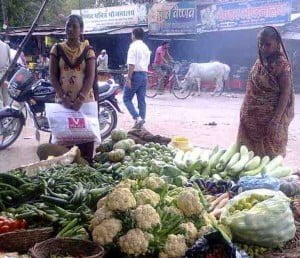 Chitrakoot and Banda districts. The sudden spike in the prices of vegetables is refusing to come down. As a result, people in small towns and villages who have fixed incomes, are suddenly having to alter their food habits to make ends meet.
Chitrakoot and Banda districts. The sudden spike in the prices of vegetables is refusing to come down. As a result, people in small towns and villages who have fixed incomes, are suddenly having to alter their food habits to make ends meet.
Babulal Chauraha is one of the busiest areas in Banda. Kamlesh Gupta has been a vegetable vendor here for almost a decade now. He said that vegetable prices were going up every other day, but he was being unable to increase prices after a point. Rajeshwari, a resident of Tindwari block’s Padarathpur village said that she had been managing the household for many years. Earlier in 400 rupees she would be able to buy vegetables for the whole week. Now she sends almost 1000 rupees on the same. In fact, her family has resorted to depending more on pulses, kadhi or just salt and rotis to avoid buying vegetables.
Chunni Lal has been a vegetable grower in Banda’s Badokhar Khurd village for many years. He said that due to delayed rains, growers were being forced to spend almost 700 rupees an hour for artificial irrigation. This cost was being directly passed on to consumers.
The situation is more or less the same in the neighbouring Chitrakoot district. Anita who is a vegetable vendor in the district’s Pahadi block said that many people have either reduced or stopped buying vegetables given the rates these days. She herself is suffering losses in business because many of her vegetables don’t get sold and then go bad in the heat.
As of now, even in small towns and villages basic vegetables are priced high with onion at 30 rupees a kilogram, potato at 30 and tomatoes between a 100 and 120 rupees a kilo. Even otherwise cheaper vegetables like gourd (lauki) are priced at 20 rupees a kilo. As for green vegetables, spinach at 40 rupees a kilo has completely disappeared from the meals of most families.
Click here to read original story